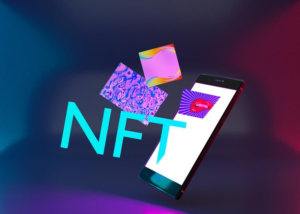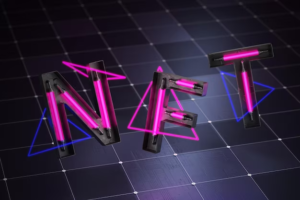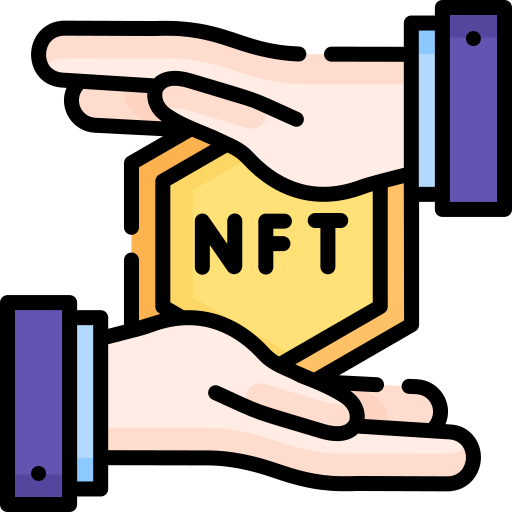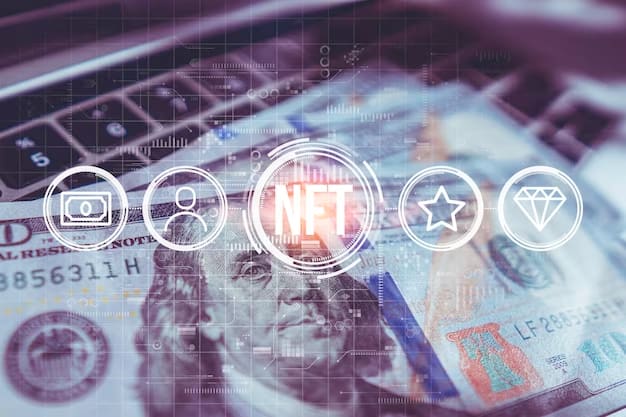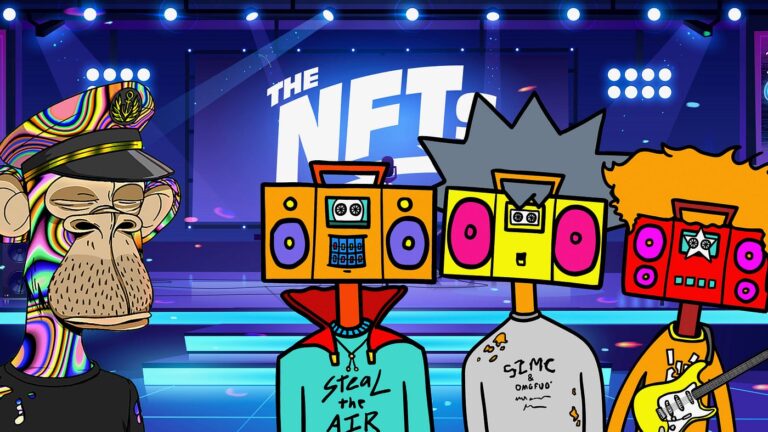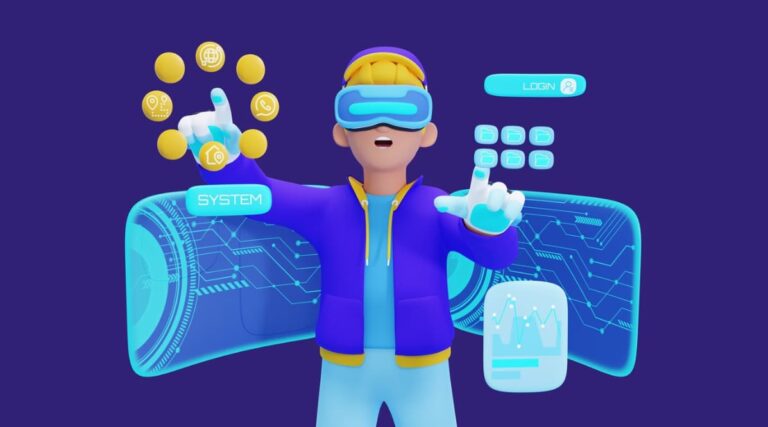Introduction
Dynamic NFTs are a groundbreaking innovation in the constantly changing digital asset landscape. They transform our perception and interaction with Non-Fungible Tokens by providing an interactive experience that continues to develop over time. This marks a significant leap forward for blockchain technology and digital art alike, surpassing static NFTs. Through this extensive article, we aim to explore Dynamic NFTs comprehensively; addressing your concerns while guiding you through their complexities – all related to this thrilling digital phenomenon!
Understanding Dynamic NFTs
A Dynamic NFT is essentially a distinctive form of non-fungible token. Unlike static traditional NFTs, it can transform and develop over time due to external factors such as market circumstances, weather conditions or user interaction triggering the changes.
The Mechanics Behind Dynamic NFTs
Smart contracts are the cornerstone of dynamic NFTs as they establish predetermined rules and conditions making them self-executing. These contracts run on blockchain networks such as Ethereum, containing the underlying logic governing how an NFT progresses over time. Therefore, smart contracts play a fundamental role in enabling these distinct digital assets to exhibit dynamic behavior.
Key Elements of Dynamic NFT Smart Contracts
| Feature | Description |
|---|---|
| Triggers | Smart contracts incorporate triggers that activate modifications in the characteristics or presentation of NFTs. These triggers are synchronized with a range of exogenous incidents, enabling the NFT to respond flexibly to real-life information. |
| Properties Modification | Smart contracts enable the modification of attributes and properties of dynamic NFTs, such as altering colors, text, or images along with any other metadata associated with them. |
| Metadata Updates | Dynamic NFTs have modifiable metadata, which enables real-time updates based on changes in the underlying data source. To illustrate this point, consider a Dynamic NFT linked to stock prices that can swiftly update its metadata with the most recent values. |
| Interactivity | Smart contracts facilitate communication between the NFT possessor and the corresponding token, allowing for modifications or executions to be initiated by owners. |
Key Features of Dynamic NFTs
Dynamic NFTs offer a range of distinctive features that set them apart from traditional static NFTs:
- Interactivity: Dynamic NFTs offer interactivity, giving owners the power to engage with their digital assets. Such engagement may entail initiating modifications, picking from various states, or even partaking in the storyline of an NFT. The degree of interaction can range widely- from uncomplicated choices to intricate decision trees;
- Real-time Updates: The real-time updates of Dynamic NFTs are highly exhilarating. These NFTs can react to external data sources including cryptocurrency values, sporting events results, social media trends, and current weather conditions. The integration with live data ensures that these innovative tokens stay fresh and dynamic amidst a constantly evolving landscape;
- Personalization: Dynamic NFTs provide a distinctive personalized encounter to every owner. As users can influence the tokens’ behavior and appearance through real-time data, each individual’s NFT evolves distinctively. This customizability enhances the intrinsic value of these assets while making them more captivating and immersive for their owners;
- Evolving Narrative: A few NFTs are designed with fluid storylines that either depict a tale or undergo an evolution. Take, for instance, certain digital collectible card games where the player’s decisions and accomplishments shape the development of their respective NFTs. This feature adds to nurturing a profound bond between owners and their cherished tokens.
Applications of Dynamic NFTs

Dynamic non-fungible tokens (NFTs) possess the extraordinary capability of adjusting and reacting to different stimuli and information origins, resulting in a wide range of functional uses throughout various industries. Below, we explore in detail how Dynamic NFTs can be utilized in these sectors:
Art and Collectibles
Dynamic NFTs offer artists the ability to produce interactive and evolving artworks that respond to environmental influences or audience interaction, resulting in a distinctive and captivating art encounter. In terms of artistry and collectibles, Dynamic NFTs have several essential characteristics:
- Evolving Artworks: NFTs that are dynamic have the ability to depict artworks that transform gradually. For example, a digital painting has the capacity to shift its colors, designs, and components depending on real-life occurrences or involvement by users;
- Audience Interaction: By giving their audience a say in the development of the artwork, artists can encourage greater involvement and foster a closer bond between themselves and collectors. This interaction creates opportunities for mutual creative exploration;
- Scarcity and Rarity: Dynamic NFTs may introduce a dynamic sense of scarcity and rarity, wherein particular states or versions of an artwork eventually become more scarce as time passes, elevating their desirability to collectors.
Gaming
In the gaming industry, Dynamic NFTs open up exciting possibilities for in-game assets and experiences. Players can interact with items that evolve based on their achievements, in-game events, or real-world data. Here’s a closer look at Dynamic NFTs in gaming:
- Evolving Game Items: Game developers can create dynamic in-game assets like weapons, skins, or characters that grow in power or appearance as players accomplish specific goals or reach milestones;
- Real-Time Challenges: Dynamic NFTs can introduce real-time challenges or quests where the outcome affects the attributes of the NFT. For instance, a sword could gain new abilities after defeating a challenging boss monster;
- Player-Owned Ecosystem: Gamers can truly own and trade their in-game assets as Dynamic NFTs, giving rise to player-owned economies within games.
Finance
Dynamic NFTs have the potential to revolutionize the financial sector by representing dynamic financial instruments and assets. These tokens can adapt to market conditions, providing investors with real-time insights and opportunities. Here’s how Dynamic NFTs can be applied in finance:
- Market-Responsive Assets: Dynamic NFTs can represent financial instruments such as stocks, bonds, or cryptocurrencies that automatically adjust their attributes based on market fluctuations. For example, a Dynamic NFT representing a stock can update its value in real-time;
- Customized Portfolios: Investors can create portfolios of Dynamic NFTs that adapt to their risk tolerance, investment goals, and market preferences;
- Predictive Analytics: Advanced Dynamic NFTs can incorporate predictive analytics to help investors make informed decisions based on historical and real-time data.
Identity and Access
Dynamic NFTs have the potential to transform how identity and access rights are managed. These tokens can represent evolving credentials or access permissions, enhancing security and user control. Here’s how Dynamic NFTs can be used in identity and access management:
- Evolving Credentials: Dynamic NFTs can represent identity credentials that evolve over time. For example, a digital ID NFT may update its information as the holder’s details change;
- Access Control: Organizations can use Dynamic NFTs to grant or revoke access rights dynamically. Access permissions can be adjusted in response to changing roles or security requirements;
- Authentication: Dynamic NFTs can serve as a secure means of authentication, reducing the risk of identity theft or unauthorized access.
The Creation Process of Dynamic NFTs

Creating a dynamic NFT involves a multi-step process that combines artistic creativity, programming skills, and blockchain technology. Let’s delve into the creation process of dynamic NFTs, covering everything from designing the asset to minting the token.
Key Steps in Creating Dynamic NFTs
The creation process of dynamic NFTs can be divided into several key steps, each requiring specific skills and expertise.
| Step | Description |
|---|---|
| Designing the Asset | The initial step in creating a dynamic NFT is designing the digital asset itself. This can be a piece of digital art, an animated graphic, a music track, or any other form of digital content. The asset should be visually appealing and capable of dynamic changes or interactions. |
| Programming the Smart Contract | To make an NFT dynamic, a smart contract is essential. Smart contracts are self-executing contracts with predefined rules and conditions. They determine the behavior of the NFT, including how it responds to user interactions and changes over time. This step requires programming skills and knowledge of blockchain platforms that support smart contracts, such as Ethereum or Binance Smart Chain. |
| Developing Dynamic Elements | Within the smart contract, dynamic elements or triggers are programmed. These elements dictate how the NFT will react to certain events or inputs. For instance, a dynamic NFT artwork might change its appearance when someone interacts with it or when specific conditions are met. This step involves coding and testing to ensure the desired interactivity and responsiveness. |
| Integrating Data Sources | Dynamic NFTs often rely on external data sources to update their content. For example, a weather-themed dynamic NFT might fetch real-time weather data to change its appearance based on current weather conditions. Integrating data sources requires API integration and data handling skills. |
| Testing and Debugging | Thorough testing and debugging are crucial to ensure the smart contract functions correctly and the dynamic elements work as intended. This phase involves identifying and fixing any issues, security vulnerabilities, or unintended behaviors. |
| Minting the NFT | Once the dynamic NFT is fully designed and programmed, it needs to be minted on a blockchain that supports NFTs. Minting involves creating a unique token on the blockchain that represents ownership of the dynamic asset. Ethereum, Polygon, and Flow are some popular blockchains used for NFT minting. |
| Metadata and Description | It’s essential to provide detailed metadata and a description for the NFT. This information includes the title, artist information, description of the dynamic features, and any additional details that collectors should know. |
| Listing and Selling | After minting, the dynamic NFT can be listed for sale on NFT marketplaces. The pricing strategy, royalties for creators, and terms of sale should be considered during this phase. |
Collaborating Between Artists and Developers
The creation of dynamic NFTs often requires collaboration between artists and developers. Artists bring their creative vision to life, while developers implement the technical aspects. Effective collaboration ensures that the final dynamic NFT is both visually captivating and functionally dynamic. Here’s how artists and developers can work together in the creation process:
- Conceptualization: Artists and developers should brainstorm and outline the concept of the dynamic NFT, defining its visual elements and interactive features;
- Design and Visuals: Artists focus on creating visually stunning and captivating content, while developers plan how these visuals will be integrated into the smart contract;
- Development and Integration: Developers code the smart contract and implement the dynamic features as per the artist’s vision. They handle the technical aspects of data integration and trigger responses;
- Testing and Feedback: Continuous communication is key during the testing phase. Artists provide feedback on how the dynamic NFT behaves visually, while developers ensure its functionality aligns with the artistic concept;
- Finalization and Minting: Once the NFT is ready, artists and developers collaborate to finalize metadata and mint the NFT on the chosen blockchain.
The Market and Future of Dynamic NFTs
Dynamic Non-Fungible Tokens (NFTs) have witnessed explosive growth in the digital asset space, redefining how collectors and enthusiasts engage with digital content. Let’s explore the current market trends for Dynamic NFTs and provide insights into their promising future.
Current Market Landscape
The market for Dynamic NFTs is dynamic and evolving rapidly, driven by the increasing demand for unique and interactive digital assets. Several key trends and developments characterize the current landscape:
- Diverse Content Offerings: Dynamic NFTs encompass a wide range of digital content, including art, music, videos, games, and virtual real estate. These offerings cater to various interests and preferences, making the market diverse and appealing to a broad audience;
- NFT Marketplaces: Prominent NFT marketplaces like OpenSea, Rarible, and Foundation have embraced dynamic NFTs, providing platforms for creators to mint, showcase, and trade their interactive assets. These marketplaces play a pivotal role in facilitating transactions and promoting dynamic NFT adoption;
- Integration of Blockchain Technology: Blockchain technology, particularly Ethereum and other blockchain platforms with smart contract capabilities, forms the backbone of dynamic NFTs. These technologies ensure transparency, provenance, and security in NFT transactions, bolstering confidence among collectors and creators alike;
- Increasing Collectibility: Collectors are drawn to dynamic NFTs not only for their aesthetic appeal but also for their unique attributes and functionalities. Owning a dynamic NFT means holding a digital asset that can evolve, respond to triggers, or interact with external data sources.
Future Prospects and Innovations
The future of Dynamic NFTs is promising, as technology and creativity continue to converge. Several exciting trends and innovations are expected to shape the dynamic NFT market:
- Enhanced Interactivity: As technology advances, Dynamic NFTs will become more interactive and responsive. Creators will incorporate advanced programming techniques to enable real-time interactions, user inputs, and even collaborative experiences within dynamic NFT ecosystems;
- Integration with Virtual and Augmented Reality (VR/AR): The integration of Dynamic NFTs with VR/AR environments is on the horizon. Collectors may immerse themselves in virtual galleries, interactive concerts, or augmented art installations, adding a new dimension to the NFT experience.
- Gamification of Dynamic NFTs: Gamified elements within dynamic NFTs will enhance engagement. Collectors may participate in quests, challenges, and competitions, earning rewards and unlocking new features within their dynamic NFT collections;
- Dynamic Utility: Dynamic NFTs will extend beyond aesthetics and entertainment. They may serve as access tokens, granting holders privileges, memberships, or utility within decentralized applications, metaverse platforms, or exclusive communities;
- Scalability and Cross-Chain Compatibility: Scalability solutions and cross-chain compatibility will address the current challenges of high gas fees and network congestion. This will make dynamic NFTs more accessible and affordable for creators and collectors.
Advantages of Dynamic NFTs
Dynamic Non-Fungible Tokens (NFTs) represent a significant evolution in the world of digital collectibles and assets. They offer a range of advantages over their static counterparts, making them a compelling choice for both creators and collectors. Let’s explore these advantages in detail.
- Engagement: Dynamic NFTs provide a more engaging and interactive experience for their owners. Unlike static NFTs that remain unchanged, dynamic counterparts can respond to user interactions, external events, or triggers. This interactivity enhances the emotional connection between collectors and their assets, driving deeper engagement;
- Uniqueness: Each Dynamic NFT can evolve in unique ways, increasing its rarity and value. Collectors are drawn to the prospect of owning a digital asset that possesses dynamic attributes, such as changing visuals, behaviors, or responses. This uniqueness sets dynamic NFTs apart and contributes to their desirability;
- Flexibility: Creators of dynamic NFTs enjoy greater artistic freedom to express dynamic concepts and narratives. They can explore a wide range of possibilities, from artworks that change with the weather to music NFTs that adapt to the listener’s mood. This flexibility empowers artists to push creative boundaries and captivate their audiences in novel ways.
Challenges and Considerations
While Dynamic NFTs offer exciting advantages, they also come with certain challenges and considerations that creators and collectors should be aware of.
- Complexity: The creation and management of Dynamic NFTs require more technical expertise compared to static NFTs. Creators must understand blockchain technology, smart contract development, and programming to implement dynamic features effectively. Collaboration between artists and developers is often necessary to bring dynamic visions to life;
- Scalability: High transaction volumes and complex interactions within dynamic NFT ecosystems can lead to scalability issues. Blockchain networks may experience congestion and high gas fees during periods of intense activity. Scalability solutions, such as layer 2 solutions or cross-chain compatibility, are essential to address these challenges and ensure smooth operations;
- Regulation: The evolving nature of Dynamic NFTs may present new regulatory challenges. As these tokens gain popularity and incorporate more functionalities, regulators may need to adapt and establish guidelines to ensure compliance with existing laws. Creators and collectors should stay informed about regulatory developments in the NFT space.
Conclusion
As the technology of Dynamic NFTs matures and more creators and developers enter the field, we can anticipate a wide array of innovative applications and experiences. Integral to this evolution is the concept of NFT royalties, which ensures that creators continue to receive compensation for their work as it gains value and changes hands over time. This revolutionary mechanism fosters a sustainable and vibrant digital economy, rewarding creativity and investment alike. Whether you’re an artist, collector, gamer, or simply a curious observer, the world of Dynamic NFTs holds something exciting for everyone. Dive into this dynamic adventure and discover the endless possibilities that await, including the transformative potential of NFT royalties to reshape creative economies.
FAQs
Dynamic NFTs can change over time based on predefined rules or external inputs, offering a more interactive and evolving experience compared to static NFTs.
Yes, anyone can create a Dynamic NFT with the necessary technical skills to program smart contracts and design the asset.
The cost of Dynamic NFTs can vary widely based on their complexity and the reputation of the creator. Generally, the additional functionality and uniqueness can lead to a higher value.
Dynamic NFTs can be purchased on various NFT marketplaces that support dynamic content. Ensure the platform supports the specific type of Dynamic NFT you’re interested in.
Like any asset, the value of Dynamic NFTs can fluctuate based on demand, rarity, and the evolving nature of the token. However, their unique and interactive features may help sustain interest and value over time.
